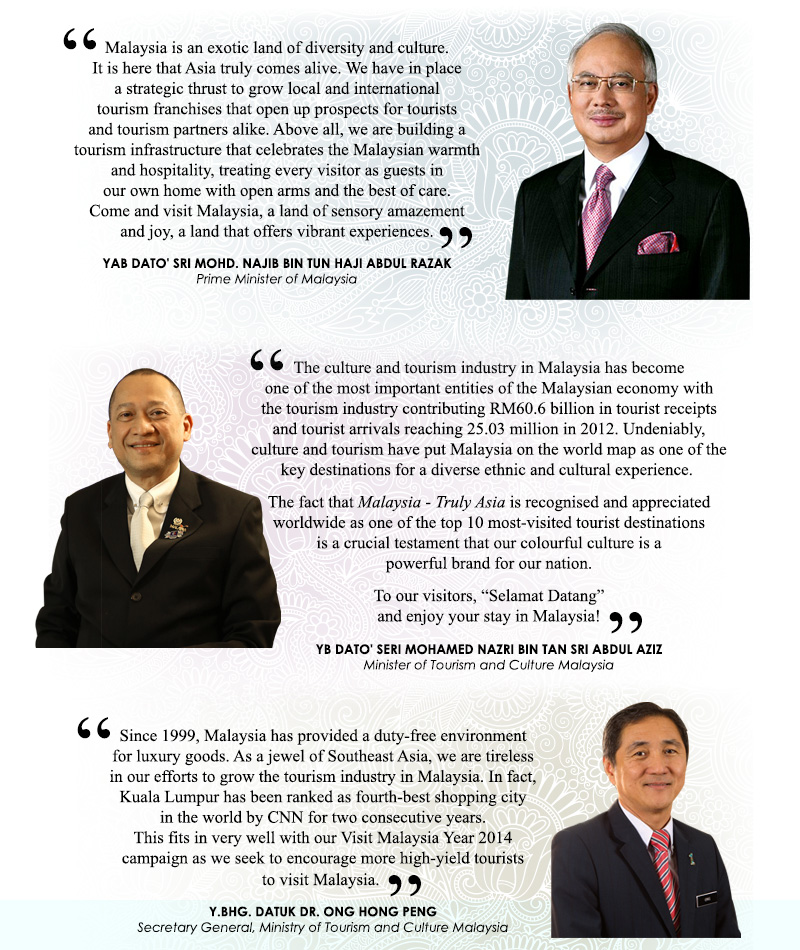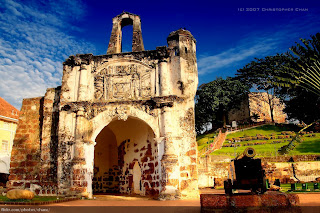CULTURE
Throughout the passage of time, Melaka`s socio-culture
has blossomed with diversity, continuity, nationalism, racial integration and
subliminal harmony. Melaka today is a glorious cosmopolitan steeped in rich
culture and tradition.
The Malays
The majority of Melaka people`s are the Malays and they
usually live in villages as tight knit communities. They speak Malay, practice
Islam and bear Arabic names and are steeped with traditions.
 |
| Malays |
The Chinese
The second largest community is the Chinese. Synonyms
with business and entrepreneurship, the Chinese are usually predominant in the
cities. Despite passage of time and proress this race comprising of the various
dialect groups such as Hokkien, Cantonese, Hakka, Teochew and Hainanese retain
their legacies and still practice their various traditional festivities and
religious rites.
 |
| Chinese |
The Indians
The Indians make up another important ethnic group
Melaka. Deepavali is the main celebration of the Hindu Indians and Thaipusam
being their religious event with several rituals including a procession from
one temple to another.
 |
| The Indians |
The Baba-Nyonyas / Peranakan
Malacca is also where the Babas and Nyonyas or Peranakan
originate. They are descendants of the Chinese who arrive in Melaka and married
locals. They retain many Chinese customs but Malay is their mother-tongue. They
have adopted the Malay-style of style of dressing.
 |
| Baba & Nyonya |
The Chittys
The Melakan chitty are strait-born Indian and offsprings
of Indian traders who came from Panai Koromandel in India. This unique
communities is the descendants of early india merchant who come here sometime
during 15th century. They practice hindu faith, speak Malay, food is
typical Indian and they practice the traditional Indian wedding ceremony. The
chitty women wears `sarung` just like the Nyoyas and traditional Malay women.
 |
| The Chitty |
The Portuguese
During the Portuguese rule, many of them choose to remain
in Malacca and since 1920, preferred to live in the Portuguese settlement. They
speak ancient Portuguese Dialect called Cristo. They still practice their aged
old festivals and customs. Besides Christmas they also celebrate the San Pedro
in commemoration of their patron saint.
Tranquerah Mosque
It is located on the right-hand side of jalan Tengkera
and is one of the oldest mosques in the state, believed to the built in the
1750s. It underwent repair works in the 1950s. It is said that this mosque
bears resemblance to the Demak Mosque in Indonesia and the kampong Laut Mosque
in Kelantan. The Tranquerah Mosque used to be the state`s official mosque then.
It has been gazette under National Heritage Act 2005.
 |
| Tranquerah Mosque |
The Baba Nyonya Heritage Museum
The public can now view the heirloom unique to this
heritage at the baba & Nyonya Heritage Museum run by the Babas and Nyonyas
of Melaka.
Mini Malaysia & Asean Cultural park
Located in Ayer Keroh, this unique theme park was
conceived as a summary of the prominent cultural elements of 13 states in
Malaysia and southeast Asian countries. Visitor can catch a glimpse of each
country`s history and cultural based on traditional homes in each Asean
countries including the architectural style of the 13 states in Malaysia and
furnished with various items such as arts and crafts which depict the culture
of each state and countries. Apart from it, there are cultural performances and
traditional games for the visitors.
Jonker Walk
Jonker Walk is well known for its art galleries, antique
shops, among them goldsmiths, watch repairers, clog makers and beaded
shoemaker, food outlets and many more. It is truly a place where the culture
and traditions of Malacca seem to seep fromevery nook and cranny of the quaint
little shos which line this street. The street becomes a flea market for
antique lovers every Friday, Saturday and Sunday from 6pm to midnight.
Chitty Museum
The Chitty Museum is the effort made by chitty`s
community to document and preserved their unique heritage.























